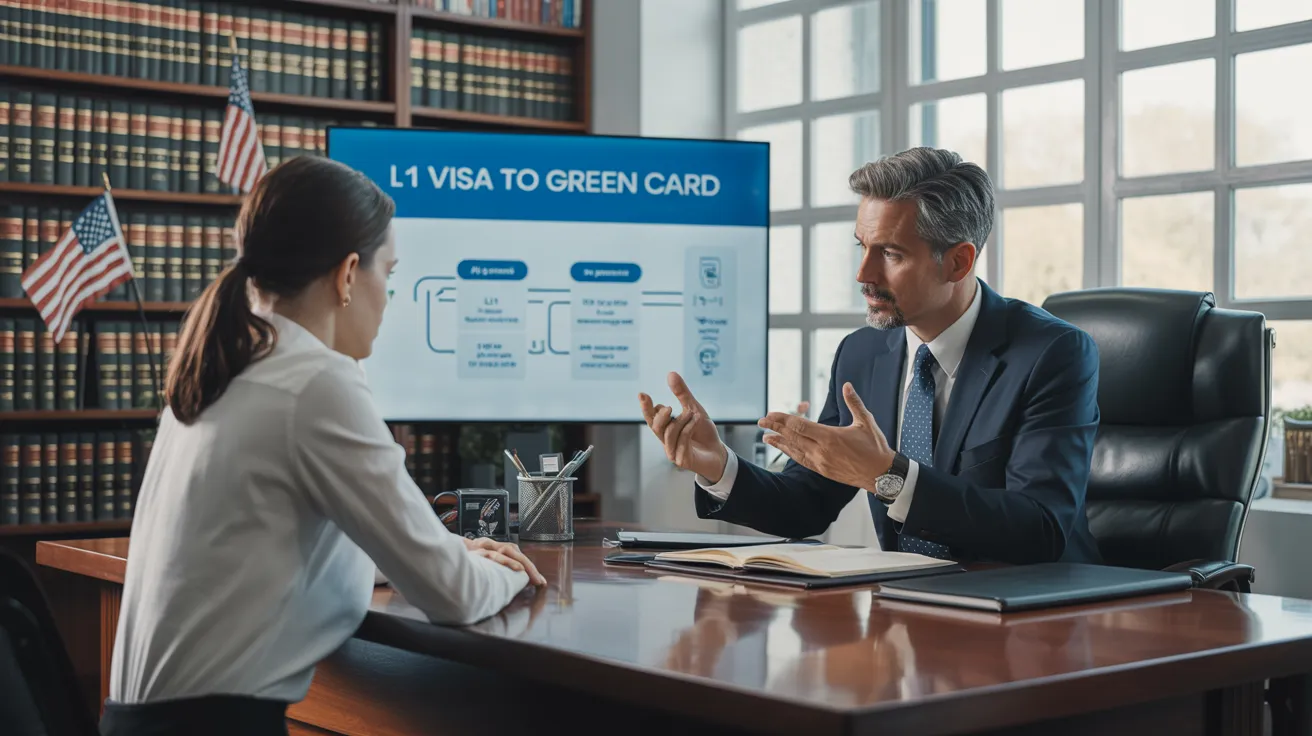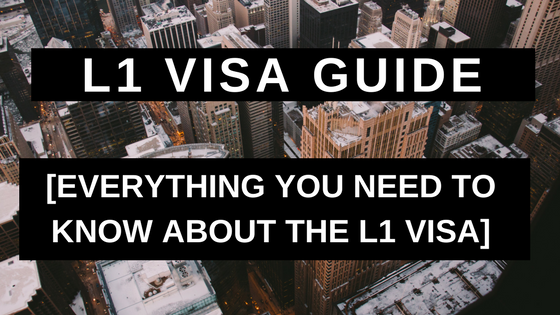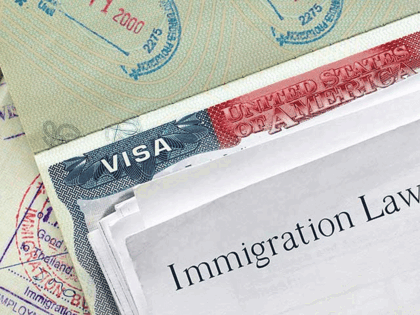Unlocking Opportunities: A Comprehensive Overview to the L1 Visa Process
The L1 visa process offers a critical path for international business seeking to move vital staff members across boundaries. Recognizing the nuances of eligibility requirements, the differences between L-1A and L-1B visas, and the complexities of the application process can considerably influence a candidate's success. Nevertheless, maneuvering this complex landscape is not without its difficulties, and mindful interest to documentation and company sponsorship is necessary. As we check out the essential parts of this procedure, the techniques for conquering possible obstacles will come to be evident, disclosing how notified prep work can open a world of opportunities.
Comprehending the L1 Visa
Understanding the L1 visa entails identifying its relevance as an important device for international companies looking for to transfer knowledgeable staff members in between international workplaces. This non-immigrant visa classification facilitates the motion of execs, managers, and specialized expertise workers to the United States, thus enabling companies to preserve functional continuity and harness international skill effectively. The L1 visa is separated into 2 primary categories: L-1A for supervisors and execs, and L-1B for workers possessing specialized knowledge.The L1 visa serves an important duty in boosting a company's one-upmanship in the international marketplace - L1 Visa. By allowing firms to relocate their crucial personnel, organizations can guarantee that crucial jobs are handled by qualified individuals who are already acquainted with the company's society and functional procedures. This internal transfer system not just cultivates understanding sharing however likewise promotes development and collaboration throughout borders.Moreover, the L1 visa is frequently favored for its relatively uncomplicated application process compared to other visa groups, as it permits double intent, permitting holders to go after long-term residency while on a short-lived job visa. This feature makes the L1 visa particularly appealing for both employers and staff members, as it streamlines the pathway for skilled experts to establish lasting residency in the USA
Qualification Standards
Qualification for the L1 visa rests on numerous crucial criteria that ensure both the employee and the employer fulfill certain credentials. This non-immigrant visa is made for international business to transfer workers from consular services to U.S. counterparts.Firstly, the employer should be a certifying company, that includes a moms and dad business, branch, associate, or subsidiary of an U.S. business. The company has to have been doing business for at the very least one year both in the united state and abroad. This assures that the firm has enough operational security and a genuine presence.Secondly, the employee has to hold a supervisory, executive, or specialized knowledge setting. For L1A visas, the candidate needs to demonstrate managerial or executive certifications, while L1B visas concentrate on specialized expertise pertaining to the organization's items, services, or processes. Additionally, the staff member has to have helped the foreign entity for a minimum of one continual year within the last 3 years prior to their application.Lastly, the employee's role in the united state should straighten with their previous placement, guaranteeing that their skills and expertise are leveraged for the company's advantage.
Kinds Of L1 Visas
The L1 visa group consists of two key types developed to promote the transfer of employees within multinational companies: the L1A visa for supervisors and executives, and the L1B visa for staff members with specialized understanding. Each kind serves unique functions and has specific eligibility criteria.The L1A visa is tailored for people who hold supervisory or executive positions within a business. This visa allows high-level workers to move to an U.S. branch, subsidiary, or affiliate of the very same organization. Candidates for the L1A visa have to show that they have been used in a managerial or executive ability for a minimum of one continuous year within the previous three years prior to their application. In addition, this visa offers a longer period of remain, originally granted for three years, with the possibility of extensions for as much as seven years.In contrast, the L1B visa is meant for specialists with specialized knowledge pertaining to the business's products, solutions, or processes. To certify, candidates need to show that their know-how is important to the organization which they have actually worked for at least one constant year within the last three years in a role that required this specialized knowledge. The L1B visa is at first granted for 3 years, with extensions offered for approximately 5 years.Both visa types are vital for business looking for to improve their worldwide procedures by leveraging experienced workers, consequently advertising development and effectiveness within the U.S. market.
Application Process
Steering through the L1 copyright process includes numerous essential steps that have to be carefully followed to assure an effective end result. The process starts with the U.S. employer, that need to first establish eligibility by showing a qualifying relationship with the international entity and verifying that the worker meets the specific needs for the L1 visa group being sought.Once qualification is validated, the employer launches the procedure by submitting Form I-129, the Application for a Nonimmigrant Worker, with the United State Citizenship and Migration Solutions (USCIS) This type has to be accompanied by a comprehensive summary of the work duties to be executed, the organizational structure of both the U.S. and international entities, and the staff member's certifications. It's important to validate that all details is exact and total, as noninclusions or inaccuracies can bring about delays or denials.Upon approval of the I-129 petition, the following step includes the worker obtaining the L1 visa at an U.S. embassy or consular office in their home country. This stage needs the completion of Type DS-160, the Online Nonimmigrant copyright, and setting up an interview. Throughout the interview, the candidate must provide evidence sustaining their certifications and the employer's petition.After the visa is given, the employee can go into the USA to function in the designated function. On the whole, mindful preparation and adherence per action of the application procedure are important for a successful L1 visa result.
Needed Documentation

Necessary Types Needed
Steering the L1 Visa process requires mindful interest to the essential forms and documentation needed for a successful application. The key form required is the Kind I-129, Request for a Nonimmigrant Employee, which need to be finished and sent by the U.S. company. This form details the details of the employment deal and the credentials of the staff member seeking the L1 Visa.Alongside Type I-129, the applicant will need to complete Type I-539 if accompanying relative are likewise requesting visas. Additionally, the employer has to supply evidence of the certifying connection between the U.S. entity and the international entity, commonly requiring the submission of business files such as write-ups of consolidation or monetary statements.Moreover, it is vital to include the L Classification Supplement to Form I-129, which defines the kind of L Visa being asked for-- either L-1A for supervisors and executives or L-1B for workers with specialized knowledge. Finally, candidates must assure that all forms are signed and dated properly, as insufficient submissions can result in delays or denials. Properly putting together these crucial kinds lays the foundation for a smoother L1 copyright process.

Supporting Evidence Requirements
Sustaining documents is essential for a successful L1 copyright, as L1 Visa Requirements it substantiates the cases made in the request. Applicants have to provide a variety of files to demonstrate eligibility for the visa, which is classified into 2 main kinds: evidence of the certifying connection between the U.S. and international entities and evidence of the candidate's qualifications.To develop the connection, applicants should submit documents such as corporate business graphes, economic statements, and evidence of ownership. These documents confirm that the foreign firm has a qualifying partnership with the U.S. employer, whether as a moms and dad business, subsidiary, branch, or affiliate.For the candidate's certifications, necessary documents include a thorough employment letter from the international employer, detailing the applicant's task title, tasks, and period of employment. In addition, academic qualifications, such as levels and diplomas, must be provided to verify the candidate's know-how in the pertinent area.
Employer Sponsorship Papers

Typical Obstacles
Navigating the L1 visa process offers a number of common difficulties that candidates must be mindful of. Key problems usually include rigorous documentation demands, potential delays in handling times, and the necessity for strict lawful conformity. Recognizing these challenges can aid applicants much better prepare and minimize risks during their copyright journey.
Documents Demands
The L1 copyright procedure commonly offers significant challenges connected to documentation demands. Candidates have to provide considerable paperwork to establish eligibility, which can cause complication and potential hold-ups. Secret files include proof of a qualifying connection between the U.S. and international company, proof of the candidate's employment background, and thorough details concerning the work function in the U.S.One typical difficulty is gathering enough evidence to show the nature of the qualifying relationship. Business usually have a hard time to existing clear organizational graphes or economic declarations that show the connection between the entities. Furthermore, guaranteeing that letters of support from companies accurately mirror the candidate's task obligations and qualifications is necessary, as unclear descriptions can result in denials.Another concern arises from the demand for comprehensive task descriptions that align with the L1 visa groups. Candidates have to express not just their existing function however also their supervisory or specialized expertise responsibilities clearly. This necessitates a detailed understanding of both the applicant's placement and the governing language utilized in L1 applications.
Processing Dead Time
Experiencing delays in processing times is an usual challenge faced by L1 visa applicants, commonly leading to stress and unpredictability. A number of factors add to these hold-ups, consisting of high application volumes, increased examination of applications, and management backlogs within the united state Citizenship and Immigration Solutions (USCIS) Applicants might find that processing times can vary significantly relying on the service center handling their application, as each center has its own work and efficiency levels. In addition, the complexity of the candidate's situation, such as the need for comprehensive documentation or information, can further prolong wait times.In some circumstances, problems connected to the candidate's current migration status or previous visa history might additionally cause extra hold-ups, as USCIS may need additional testimonial or details. It is important for prospects to remain aggressive throughout this period, maintaining open interaction with their companies and legal agents to resolve any kind of potential worries promptly.Understanding these handling time challenges can help L1 visa candidates plan for possible delays and minimize the effect on their change and profession plans. Perseverance and diligence are vital merits in maneuvering this intricate process.
Legal Compliance Issues
Many L1 visa applicants come across legal compliance issues that can complicate their journey toward getting the visa. Understanding and adhering to the certain policies established by the united state Citizenship and Migration Solutions (USCIS) is crucial. Usual challenges include demonstrating the certifying partnership in between the foreign and U.S. employers, as well as confirming that the applicant possesses the requisite specialized knowledge or managerial capacity.Additionally, candidates must offer thorough paperwork describing their work duties, corporate structure, and economic feasibility of the U.S. entity. Inadequate or unreliable documents can lead to hold-ups and even denials. Companies need to additionally ensure that they abide by labor laws, including wage and functioning problem criteria, which can influence visa eligibility.Another usual issue includes preserving compliance with the regards to the visa once provided. Adjustments in employment standing, work obligations, or firm structure can require amendments to the visa, which otherwise resolved immediately can lead to lawful complications. Because of this, remaining informed about compliance demands and seeking lawful advice when necessary is important to navigate the intricacies of the L1 visa procedure successfully.
Tips for Success
Success in the L1 copyright process commonly depends upon precise prep work and focus to detail. To improve your chances of authorization, start by completely recognizing the eligibility requirements for both the L1A and L1B visa classifications. Review whether your position at the business certifies as supervisory, executive, or specialized expertise, as this categorization significantly influences your application.Next, gather extensive paperwork that confirms your claims. This consists of organizational charts, in-depth work summaries, and evidence of the firm's functional framework. Clear and concise evidence of the qualifying partnership between the united state entity and the international entity is essential. Verify that all papers are arranged realistically and provided in an expert fashion, as this shows your commitment and seriousness regarding the application.Engage the services of a skilled migration lawyer who focuses on L1 visas. Their know-how can prove very useful, directing you through complex laws and ensuring that all paperwork abides by current regulations. Furthermore, prepare for the interview by practicing solution to typical questions and being all set to review your duty and contributions to the business comprehensive.
Often Asked Concerns
Can Family Members Members Come With the L1 Visa Owner?
Yes, relative of L1 visa owners, including partners and unmarried youngsters under 21, can come with the main visa holder. They might likewise get L2 visas, which permit them to live in the United States.
The Length Of Time Can I Remain on an L1 Visa?
The L1 visa allows first remains of as much as three years, with the possibility of expansion. L1A visa owners might stay for a maximum of seven years, while L1B visa owners can continue to be for 5 years.
Can L1 Visa Owners Make An Application For an Eco-friendly Card?
Yes, L1 visa owners can look for a permit. L1 Visa. They might seek long-term residency through employment-based classifications, typically needing sponsorship from their employer, offered they satisfy the necessary qualifications and documentation demands
What Happens if My L1 copyright Is Rejected?
If your L1 copyright is rejected, you might receive a notification outlining the reasons for rejection. You can look for to appeal the decision, reapply, or discover different visa options based on your conditions.
Are There Any Type Of Travel Restrictions With an L1 Visa?
An L1 visa generally enables international travel; nevertheless, re-entry to the united state rests upon keeping valid standing. Tourists should ensure conformity with visa conditions to prevent complications upon return
Conclusion
